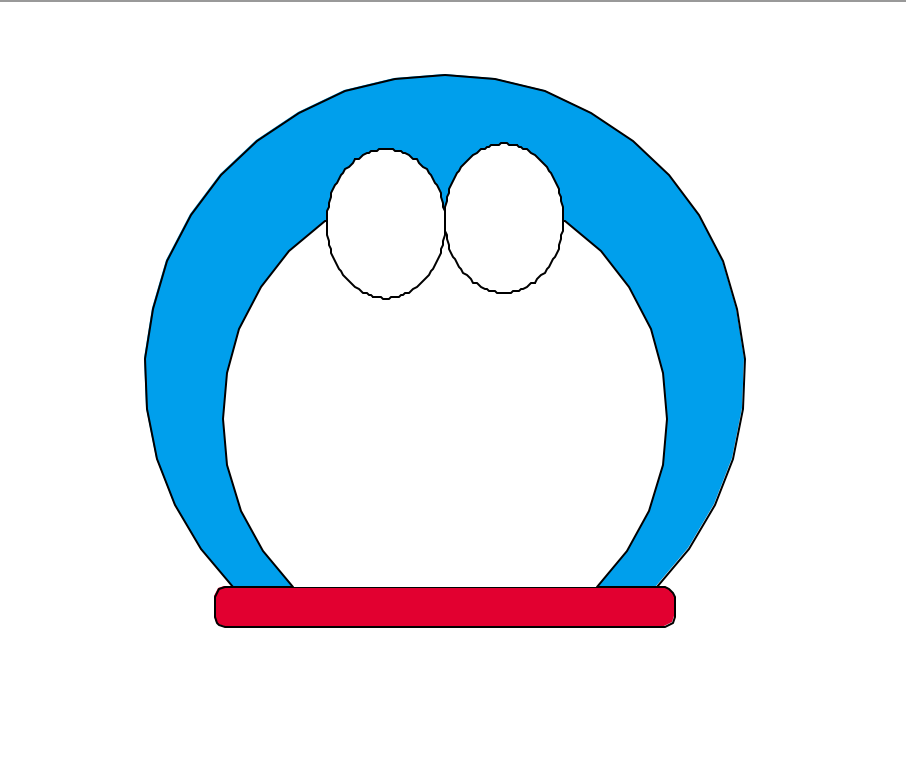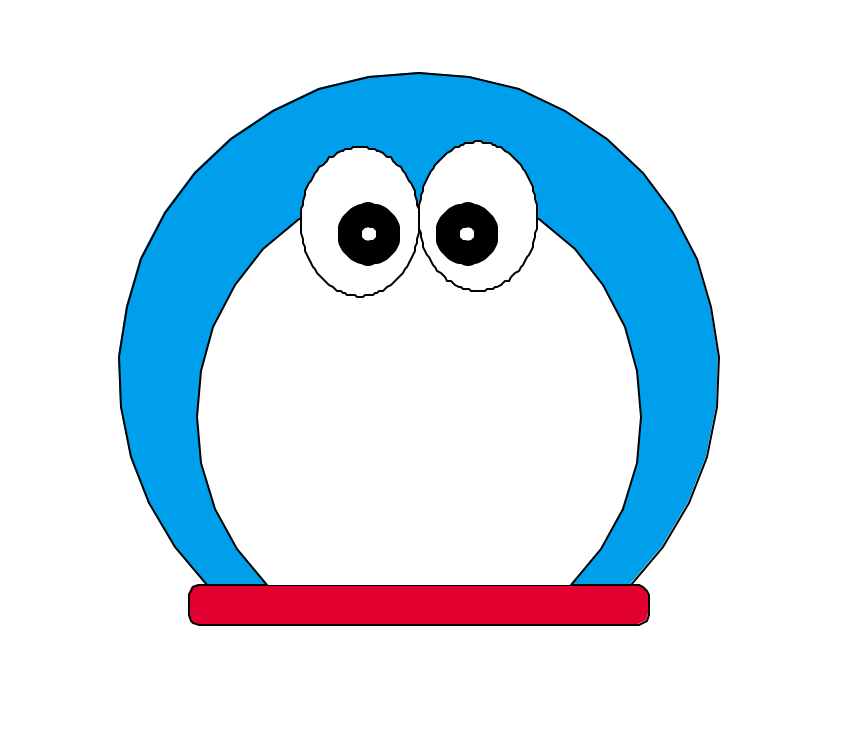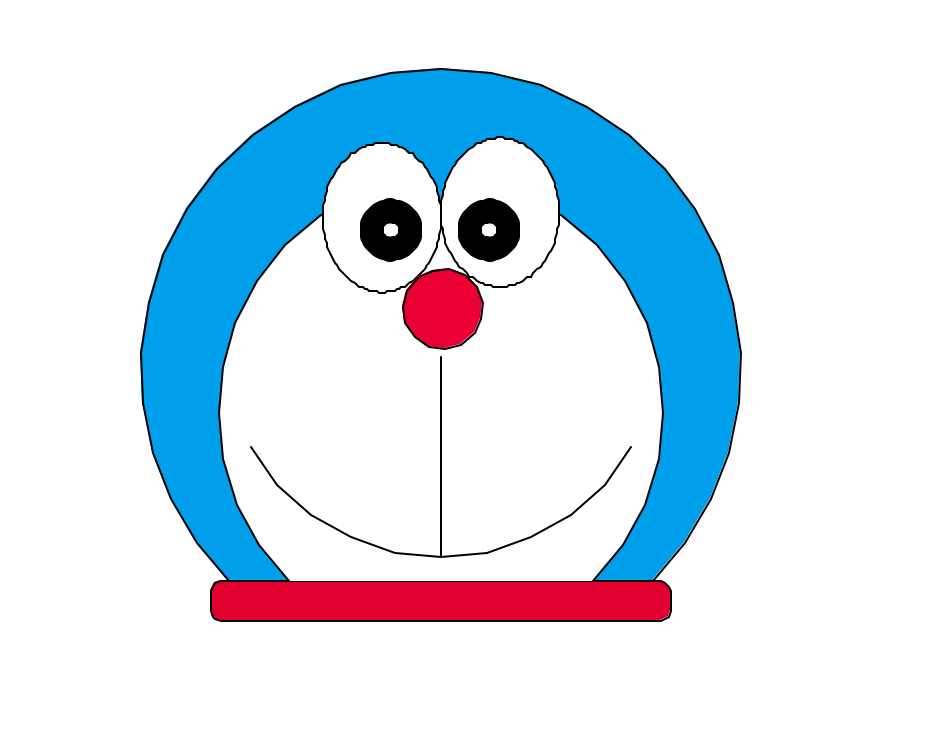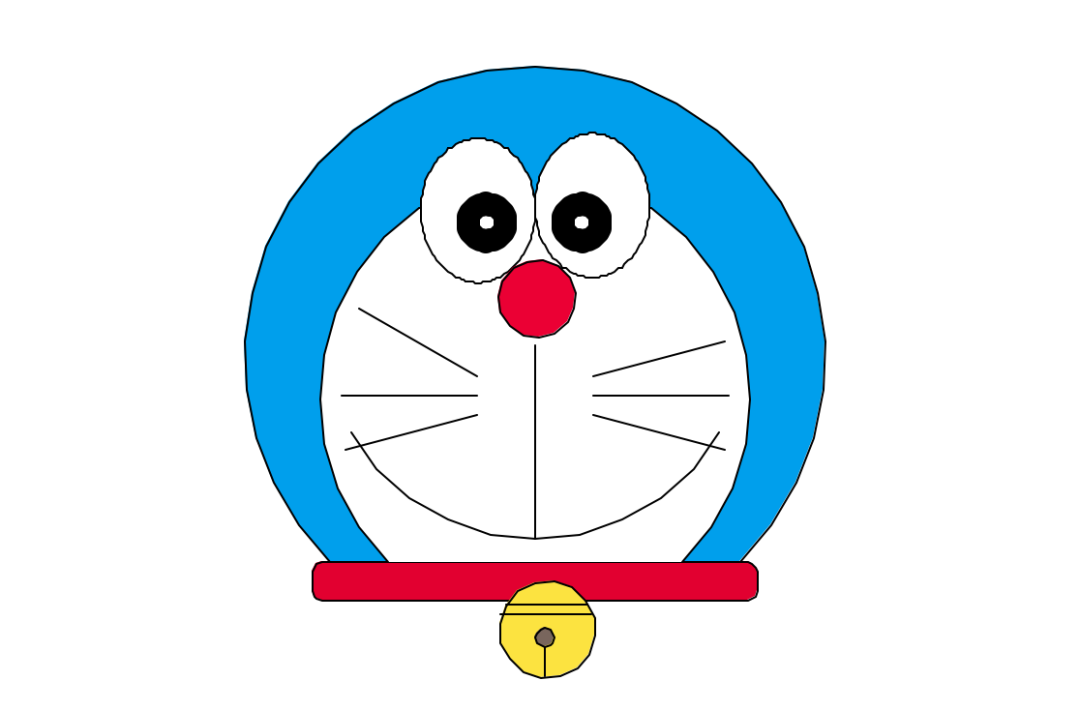用 Python 画个哆啦A梦
文 | 豆豆
来源:Python 技术「ID: pythonall」

相信大家童年的时候都看过哆啦 A 梦,他的口袋简直是无所不能,里面装满了各种神奇的道具。曾经的我也幻想过如果自己也有一个这样的口袋多好。今天我们就用 Python 来画一个哆啦A梦,怀念下我们的童年。
先来看看我们最终实现的绘制过程。

头部轮廓和围巾
老规矩,先引入今天要用到的库 turtle 并做一些基础设置。
import turtle as tt.speed(5)t.pensize(1)t.screensize(500, 500)t.bgcolor('white')
首先,我们先画下多啦 A 梦头部外轮廓,头部轮廓主要是一个多半圆,围巾就是一个小的长方形。
# 头部def head():t.up()t.circle(150, 45)t.down()t.fillcolor(head_color)t.begin_fill()t.circle(150, 270)t.end_fill()# 围巾def scarf():t.fillcolor(scarf_color)t.begin_fill()t.seth(0)t.fd(216)t.circle(-5, 90)t.fd(10)t.circle(-5, 90)t.fd(220)t.circle(-5, 90)t.fd(10)t.circle(-5, 90)t.end_fill()
来看下效果如何,呃呃呃,怎么感觉有点像大马路上的石墩儿呢,除了颜色有点像之外。

不急不急,我们再画一下脸部细节。
脸部
眼睛
俗话说眼睛是心灵的窗户,我们先把眼睛画上。
def face():t.fd(186)t.lt(45)t.fillcolor(color_white)t.begin_fill()t.circle(120, 100)t.seth(180)t.fd(120)t.seth(215)t.circle(120, 100)t.end_fill()def draw_eyes():t.fillcolor(color_white)t.begin_fill()a = 2.5for i in range(120):if 0 <= i < 30 or 60 <= i < 90:a -= 0.05else:a += 0.05t.lt(3)t.fd(a)t.end_fill()def eyes():go_to(0, 227)t.seth(90)draw_eyes()go_to(0, 227)t.seth(270)draw_eyes()
画眼睛不能直接画一个正圆,那样看起来会比较奇怪,要画一个椭圆才行,来看下效果。

眼睛画上去之后明显感觉精神多了,也有点多啦 A 梦的模样了。可是看起来还是有点不太对,是的,眼睛还没有画瞳孔。
简单起见,直接补两个黑色的圆圈圈即可。
def fill_eyes():# 填充眼睛go_to(-15, 220)t.pensize(12)t.color('black')for i in range(30):t.forward(2)t.right(12)go_to(15, 220)for i in range(30):t.forward(2)t.left(12)t.pensize(1)

不错不错,越来越有样了。下面我们把鼻子和嘴巴加上。
鼻子 & 嘴巴
鼻子也不难,在眼睛下面画个小圈圈就行,嘴巴就类似一个倒 T 字。
# 鼻子def nose():go_to(-13, 166)t.seth(315)t.fillcolor(nose_color)t.begin_fill()t.circle(20)t.end_fill()# 嘴巴def mouth():go_to(0, 156)t.seth(270)t.fd(100)pos = t.pos()t.seth(0)t.circle(110, 60)go_to(pos[0], pos[1])t.seth(180)t.circle(-110, 60)

离成功就剩下最后一步了,把胡须和铃铛画上就大功告成了。
胡须 & 铃铛
胡须就类似画猫的胡须就好,铃铛表复杂些,大圆套小圆,还有装饰。
# 胡须def mustache():h = 70go_to(30, 140)t.seth(15)t.fd(h)go_to(30, 130)t.seth(0)t.fd(h)go_to(30, 120)t.seth(-15)t.fd(h)go_to(-30, 140)t.seth(150)t.fd(h)go_to(-30, 130)t.seth(180)t.fd(h)go_to(-30, 120)t.seth(195)t.fd(h)# 铃铛def bell():# 大圆go_to(0, 33)t.pensize(1)t.fillcolor("#FCE341")t.begin_fill()t.circle(25)t.end_fill()# 横条纹go_to(-15, 22)t.seth(0)t.forward(42)go_to(-18, 17)t.seth(0)t.forward(47)# 小圆go_to(5, 0)t.pensize(1)t.color("black", '#79675D')t.begin_fill()t.circle(5)t.end_fill()t.seth(270)t.pensize(1)t.forward(15)
最后我们写一个入口函数,将这些画身体不同部位的函数给封装起来。代码如下;
if __name__ == '__main__':head()scarf()face()eyes()fill_eyes()nose()mouth()mustache()bell()go_to()t.hideturtle()t.done()
最终效果如下:

是不是还挺简单的?有兴趣的朋友赶快自己动手试试吧,还可以尝试把身体给加上去。
总结
本文我们使用 Python 的 turtle 库画了一下哆啦 A 梦,不知道和大家记忆中的哆啦 A 梦是否一样呢?
其实 turtle 使用不难,主要是要理清乌龟的位置以及朝向,然后就是其运动模式,直线运动,还是曲线运动以及怎调换运动方向。其中乌龟的坐标计算比较麻烦,尤其是做曲线运动的时候,大家可以结合 pos() 函数来获取查看乌龟的坐标,有助于你理清画图思路。
大家多加练习,肯定都可以画出自己想画的,有趣且好玩的图像。1:
完整代码:
https://github.com/JustDoPython/python-examples/tree/master/doudou/2020-03-27-duo-la-a-meng
_往期文章推荐_
